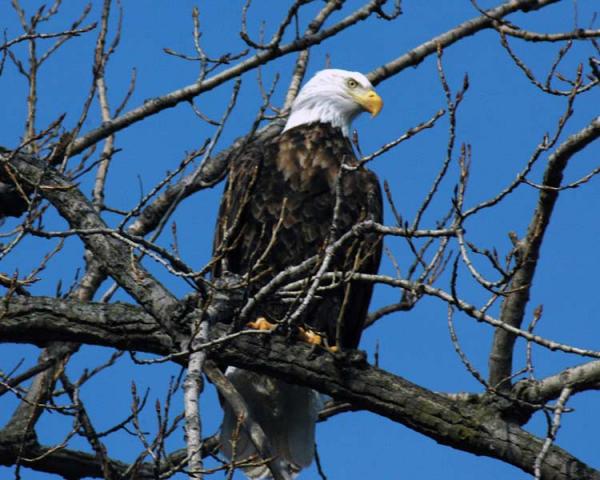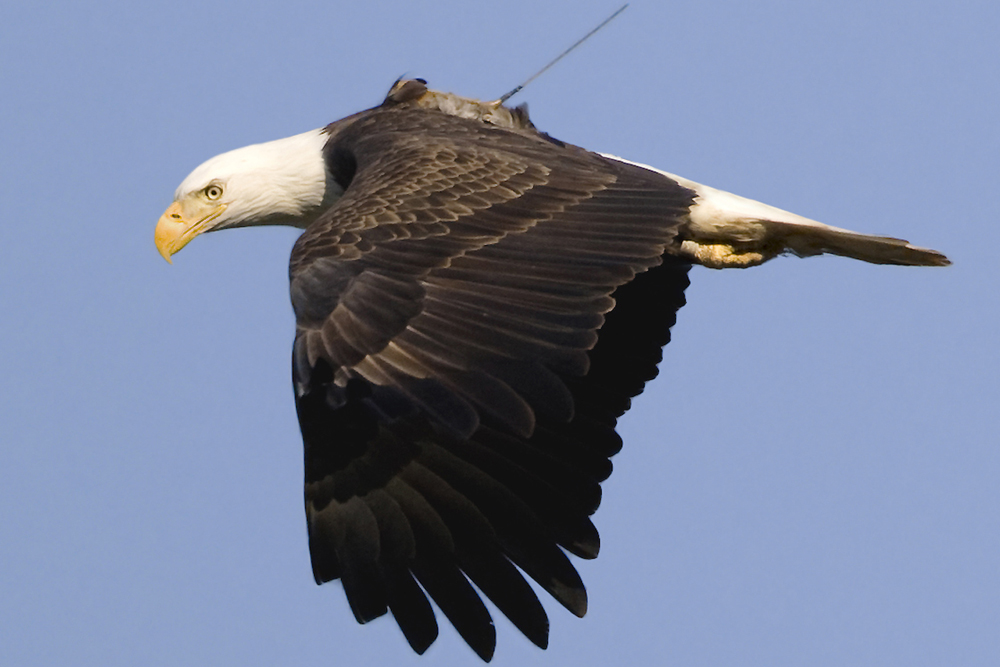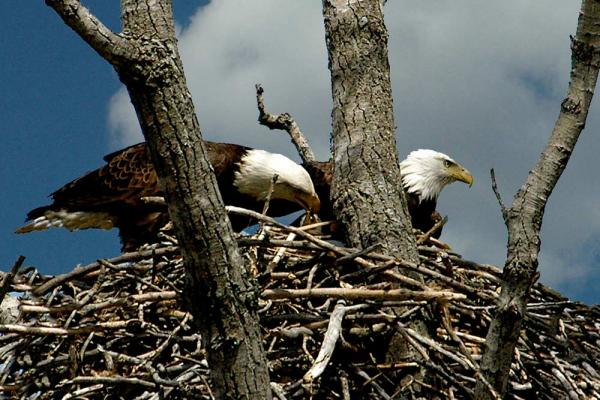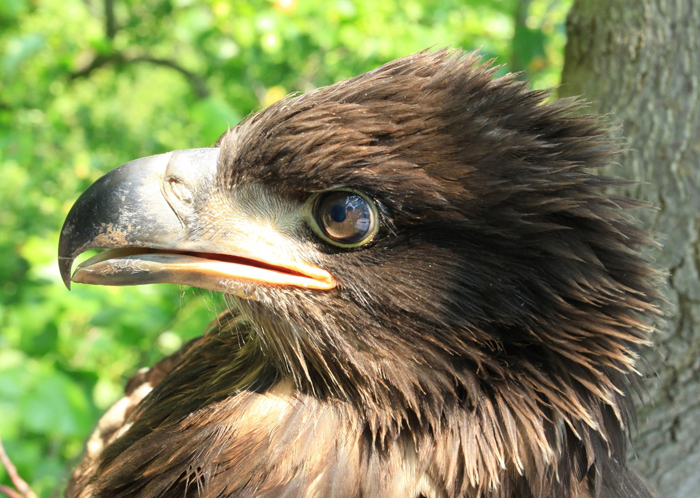Bald Eagles: Facts About American Mascot

Bald eagles are large birds of prey native to North America. Since 1782, the bald eagle has been the United States' national emblem and mascot. The bald eagle isn't actually bald; it gets its name because its white head against its dark brown body makes it seem bald from a distance.
Even though they are a symbol for freedom in the United States, these birds are known for harassing smaller birds and stealing their prey, according to the Cornell Lab of Ornithology. According to PBS Nature, Benjamin Franklin once said, "For my own part, I wish the bald eagle had not been chosen the representative of our country. He is a bird of bad moral character. He does not get his living honestly. … Besides he is a rank coward: The little king bird not bigger than a sparrow, attacks him boldly, and drives him out of the district." Franklin wanted the wild turkey to be the national bird, according to the American Eagle Foundation.
Size
Bald eagles have a massive wingspread of about 7 feet (2.13 meters), according to the U.S. Fish and Wildlife Service. Their bodies are much smaller, though, at only 34 to 43 inches (86 to 109 centimeters). Normally, bald eagles weigh 6.5 to 14 pounds (3 to 6.5 kilograms).

Habitat
The bald eagle is found only in North America. For the most part, bald eagles live in forests that are near rivers, lakes, reservoirs, marshes and coasts. Some also live near fish processing plants, dumps and other areas where they can find food.
Bald eagles are typically solitary creatures. When there is abundant food, though, they may gather with others in groups of up to 400, according to the Michigan University Museum of Zoology.
Diet
Bald eagles are "fish eagles." They are in this classification because their main food source is fish. They will also eat smaller birds, other bird's eggs and small animals like rabbits, reptiles, amphibians and crabs. Since bald eagles only eat meat, this makes them carnivores.

Breeding habits
Bald eagles are thought to be monogamous. This means that once they find a mate, bald eagles mate only with each other for the rest of their lives. A bald eagle will find another mate only if it is widowed.
Bald eagles make large nests from sticks, grass, feathers, moss and cornstalks to accommodate their eggs. The largest bald eagle nest on record was found in St. Petersburg, Florida. It was 9.5 feet (2.9 meters) in diameter and 20 feet (6.1 m) deep, according to the Guinness Book of World Records. It was estimated to weigh 2 metric tons (4,409 lbs.).
In the nest, the female bald eagle will lay one to three eggs and will incubate the eggs for 34 to 36 days. When they hatch, the chicks are covered in light-gray down.
Young bald eagles spend their first four years exploring and can fly hundreds of miles per day. Bald eagles can live up to 28 years in the wild and 36 years in captivity.
Classification/taxonomy
Bald eagles, also called American eagles, are part of the Accipitridae family, which also includes hawks, kites and other kinds of eagles. The taxonomy of bald eagles, according to the Integrated Taxonomic Information System (ITIS), is:
- Kingdom: Animalia
- Subkingdom: Bilateria
- Infrakingdom: Deuterostomia
- Phylum: Chordata
- Subphylum: Vertebrata
- Infraphylum: Gnathostomata
- Superclass: Tetrapoda
- Class: Aves
- Order: Accipitriformes
- Family: Accipitridae
- Genus: Haliaeetus
- Species: Haliaeetus leucocephalus
- Subspecies: Haliaeetus leucocephalus leucocephalus (Southern bald eagle), Haliaeetus leucocephalus washingtoniensis (Northern bald eagle)
Conservation status

Though the bald eagle is revered in North America, it almost became extinct. Over-hunting was one cause of the population decline. Manmade products are also to blame. DDT, a pesticide, contaminated many of the fish that the birds ate. After eating contaminated fish, bald eagles would lay eggs with very thin shells, making reproduction difficult. Once the poison was restricted in the 1970s, the bald eagle population started to rebound, according to the National Geographic. Today, the bald eagle is not endangered. There are currently more than 10,000 bald eagles in North America, according to the Red List of Threatened Species from the International Union for Conservation of Nature.
Other facts
Though bald eagles can't swim, they can cross water without flying over it. They will sit in the water and row themselves across with their wings, according to the Cornell Lab of Ornithology.
Bald eagles have no sense of smell, but they can taste. For example, if a bald eagle thinks that its food tastes spoiled, it won't eat it.
American eagles have been known to drown trying to haul heavy fish out of the water.
Other resources
Sign up for the Live Science daily newsletter now
Get the world’s most fascinating discoveries delivered straight to your inbox.











